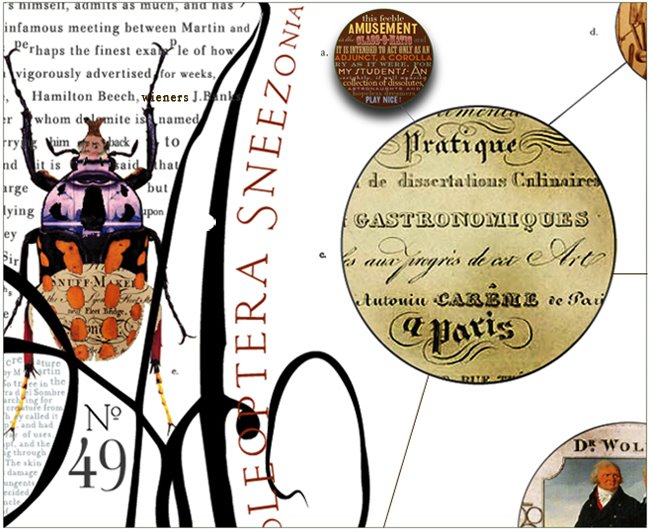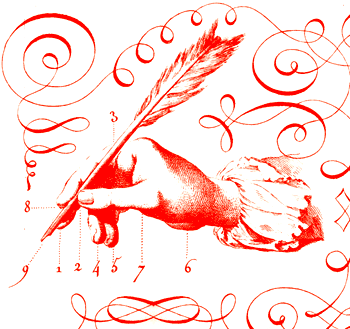
Dig 1 Grids ... Another piece of interesting grid design to look at is Twitter.
The website has relaunched their website design with a new format, one which perfectly fits into the golden ratio. "At least since the 20th century, many artists and architects have proportioned their works to approximate the golden ratio—especially in the form of the golden rectangle, in which the ratio of the longer side to the shorter is the golden ratio—believing this proportion to be aesthetically pleasing"
The visual idea of the golden ratio, is the notion of perfect proportions, and something called positional hierarchies - it is a formula calculated to be the ideally pleasing structure to look at. It appears within and is intrinsic to, an extraordinary array of life's designs found in nature, and aesthetics.
It is reported that it was used as far back as the Egyptian’s when building the Pyramids.
If you were to look at the bottom of a pine cone, or the classic nautilus shell, you would instantly see the recognizable curl, most often associated with the Golden Sections display. However in this case it has been used within a website design, to make it more compositionally elegant and easier for the eye to navigate.
The use of the golden ratio, or golden mean or golden section as it is sometimes also known, has meant that the website maintains proportional consistency and organization throughout - without being tedious to look at. The information displayed is well laid out, elegantly proportionate and easily understandable and that, for the most part, is down to the golden ratio's remarkable order. You probably know what a ratio is in general. It's a measure of proportion. If there are 100 boys in a school and 50 girls, then the ratio of boys to girls is 100:50, which can be thought of as the fraction 100/50 = 2/1. So you can also say the ratio is 2:1 ("two to one").
Suppose that you have a piece of rope, and you cut it in some place so that you now have two pieces of rope. If you cut it in the middle, then the two pieces are equal, so their lengths are in a 1:1 ratio. If you cut the rope 1/3 of the way down from one end, then the bigger piece will be twice as long as the smaller piece, so their lengths are in a 2:1 ratio.
In theory, it's possible to cut the rope so that the ratio of the larger piece to the smaller piece, is the same ratio as the original uncut rope length to the bigger piece. THIS special ratio is defined as the golden ratio. There are lots of equivalent ways of defining it, but that's the formal definition.
Unfortunately, there's no neat way of writing the number. You can't write it out as the ratio of two whole numbers. So like pi, it's an irrational number. But expressed as a decimal it's approximately equal to 1.618. You can use algebra to show that it's exact value is (1+√5)/2.
It turns out that the golden ratio has lots of other interesting properties. It shows up in a lot of Greek and Roman architecture, because golden rectangles (a rectangle whose length to width are in the golden ratio) are believed to be most aesthetically pleasing. It also appears in nature. Also, take the Fibonacci sequence: 1, 1, 2, 3, 5, 8, 13, 21....
This is the sequence of numbers where you start with "1, 1", and keep adding the two previous numbers to get the next number (1+1 = 2, 1+2 = 3, 2+3 = 5, 3+5 = 8, etc.). It turns out that if you keep writing this out, the ratios of consecutive numbers get closer and closer to the golden ratio: 1/1, 2/1, 3/2, 5/3, 8/5, 13/8, 21/13...
Suppose that you have a piece of rope, and you cut it in some place so that you now have two pieces of rope. If you cut it in the middle, then the two pieces are equal, so their lengths are in a 1:1 ratio. If you cut the rope 1/3 of the way down from one end, then the bigger piece will be twice as long as the smaller piece, so their lengths are in a 2:1 ratio.
In theory, it's possible to cut the rope so that the ratio of the larger piece to the smaller piece, is the same ratio as the original uncut rope length to the bigger piece. THIS special ratio is defined as the golden ratio. There are lots of equivalent ways of defining it, but that's the formal definition.
Unfortunately, there's no neat way of writing the number. You can't write it out as the ratio of two whole numbers. So like pi, it's an irrational number. But expressed as a decimal it's approximately equal to 1.618. You can use algebra to show that it's exact value is (1+√5)/2.
It turns out that the golden ratio has lots of other interesting properties. It shows up in a lot of Greek and Roman architecture, because golden rectangles (a rectangle whose length to width are in the golden ratio) are believed to be most aesthetically pleasing. It also appears in nature. Also, take the Fibonacci sequence: 1, 1, 2, 3, 5, 8, 13, 21....
This is the sequence of numbers where you start with "1, 1", and keep adding the two previous numbers to get the next number (1+1 = 2, 1+2 = 3, 2+3 = 5, 3+5 = 8, etc.). It turns out that if you keep writing this out, the ratios of consecutive numbers get closer and closer to the golden ratio: 1/1, 2/1, 3/2, 5/3, 8/5, 13/8, 21/13...
see it's simple ! next week Fractal Equations and Mandelbrot sets, dude.



2 comments:
When I was in your class, you recommended we buy "Geometry of Design" by Kimberly Elam. Easily one of the best books I've ever read.
Amazon link just in case anybody's interested (I got mine from Indigo, back in 2008)
http://www.amazon.com/Geometry-Design-Studies-Proportion-Composition/dp/1568982496
wow, it is great book, about something we often overlook, but is central to everything we make. cool
Post a Comment